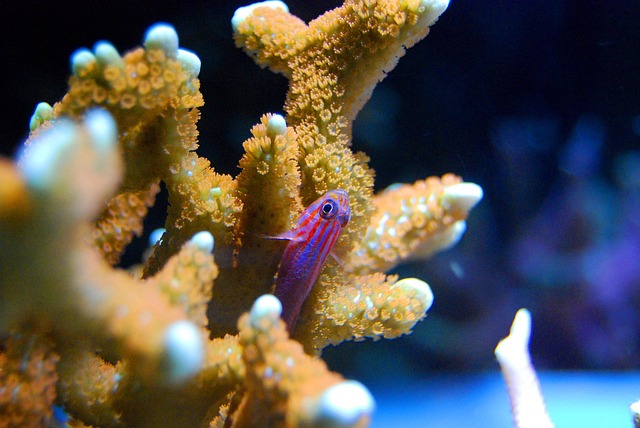
What is a Coral Reef?
Coral reefs are the underwater equivalent of a bustling city, but instead of skyscrapers, you have colorful coral formations and a diverse array of marine life. These structures belong to the class Anthozoa within the phylum Cnidaria, which also includes our jellyfish friends (or foes, depending on your beach day). Unlike their anemone cousins, corals are hard at work secreting a carbonate exoskeleton that not only supports them but also serves as a cozy home for countless marine species.
Where Do Coral Reefs Live?
Imagine a sunny beach, warm shallow waters, and a cocktail in your hand—this is essentially the ideal habitat for coral reefs. They thrive in clear, agitated waters with low nutrient levels. Surprisingly, they occupy less than 0.1% of the world’s ocean area, which is about half the size of France. Yet, they provide a home for at least 25% of all marine species. Talk about a real estate success story!
The Importance of Coral Reefs
Coral reefs are not just pretty faces in the ocean; they are vital for the health of marine ecosystems. They act as nurseries for fish and other marine creatures, providing shelter and food. Additionally, they help protect coastlines from erosion, like nature’s very own seawall. And let’s not forget, they’re a hotspot for biodiversity, supporting a variety of life forms, including fish, mollusks, crustaceans, and even sponges. Who knew sponges could be so popular?
How Are Coral Reefs Formed?
Coral reefs are the result of a long-term relationship between coral polyps and the environment. These tiny creatures build their exoskeletons from calcium carbonate, layer by layer, over years and years. The famous Charles Darwin even dabbled in this field, proposing theories on the formation of atoll reefs during his voyage on the HMS Beagle. Who knew a boat trip could lead to such groundbreaking ideas?
Threats to Coral Reefs
Despite their resilience, coral reefs are facing numerous threats, primarily from human activities. Climate change and ocean acidification are two major culprits, leading to coral bleaching and habitat loss. Overfishing and pollution are also significant issues. It’s like trying to run a restaurant while the kitchen is on fire—something has to give!
How Can We Help?
Saving coral reefs might sound daunting, but every little bit helps. Here are a few practical steps:
- Reduce Carbon Footprint: Walk, bike, or take public transport. Your car won't miss you for a day!
- Support Sustainable Seafood: Choose seafood that is caught or farmed sustainably. Your taste buds will thank you!
- Participate in Clean-Up Events: Join local beach or underwater clean-ups. Who knew cleaning could be so rewarding?
- Educate Others: Share your knowledge about coral reefs. You never know who might be inspired!
In conclusion, coral reefs are not just beautiful underwater gardens; they are crucial for the health of our oceans and, ultimately, our planet. By taking action and supporting conservation efforts, we can help preserve these vibrant ecosystems for generations to come. 🌊

















 Caching: एक परिचय
Caching: एक परिचय 
 Health
Health  Fitness
Fitness  Lifestyle
Lifestyle  Tech
Tech  Travel
Travel  Food
Food  Education
Education  Parenting
Parenting  Career & Work
Career & Work  Hobbies
Hobbies  Wellness
Wellness  Beauty
Beauty  Cars
Cars  Art
Art  Science
Science  Culture
Culture  Books
Books  Music
Music  Movies
Movies  Gaming
Gaming  Sports
Sports  Nature
Nature  Home & Garden
Home & Garden  Business & Finance
Business & Finance  Relationships
Relationships  Pets
Pets  Shopping
Shopping  Mindset & Inspiration
Mindset & Inspiration  Environment
Environment  Gadgets
Gadgets  Politics
Politics 